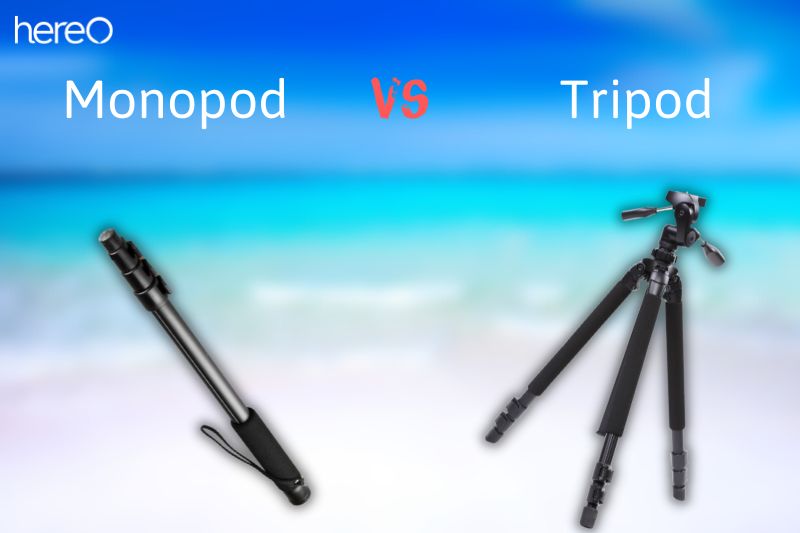Photographers can use a slower shutter speed by adding a camera support. In addition, you can work without experiencing any neck or back pain when using longer lenses.
Monopod vs tripod is a common debate when deciding on camera support. Both pieces of gear are useful in specific circumstances. The question is, when should you choose one over the other?
Contents
What Is a Monopod?
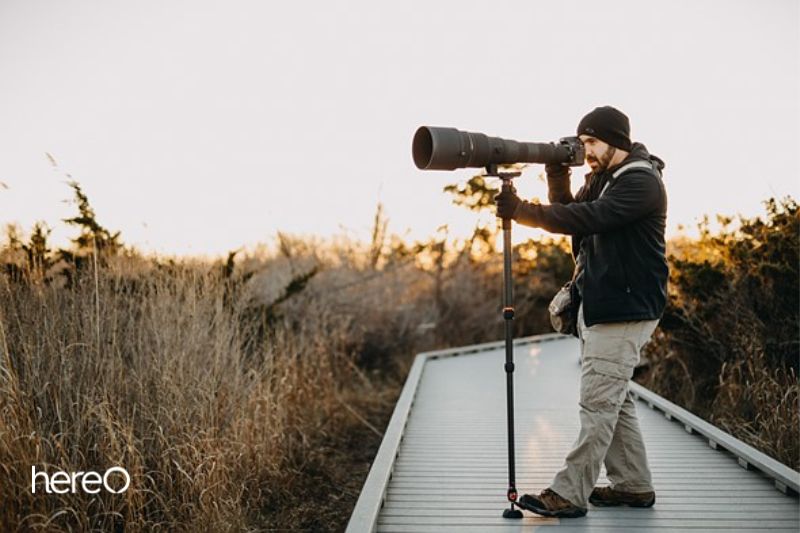
A single-leg, folding camera support system is known as a monopod. Alternatively, you can use a monopod head, also known as a tilt head, to offer you tilt control in the forward (down) or backward (up) directions. You can mount your camera straight to the top of the monopod.
A monopod has two main applications: First off, it gives you a level of stability that is far greater than what you get when holding your camera in your hand because there is an additional point of contact with the ground.
Second, it relieves your arms and shoulders of the burden of your camera when you wait for extended periods of time.
Depending on how many parts a monopod has, it can reach varying heights and extend to varied lengths. The folded size gets shorter the more pieces they have, which is often 3, 4, or 5. Additionally, monopods are available in carbon or aluminum.
Although more expensive than aluminum, a carbon fiber tripod is stronger, more resilient, and lighter.
What Is a Tripod?
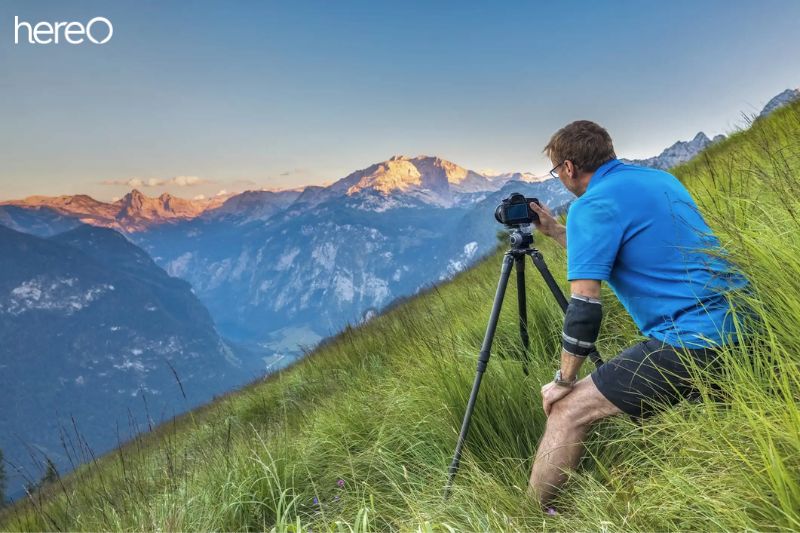
A tripod is a three-legged support structure that gives your camera or other photographic equipment, like a flash, a steady foundation. When your camera is on a tripod, as opposed to a monopod that you must hold at all times, you can safely take a step back and it will remain in place.
With the use of a tripod’s extendable legs and twist locks, you can level an uneven surface. Although they always have three legs, each model will have a different number of sections and length for each leg. This alters the tripod’s maximum height as well as its folded-for-travel length.
You need a tripod head in addition to a tripod for use with a camera. A ball head is the most common type of tripod head, and many tripods for beginners or intermediate photographers include one in the box.
With this kind of head, you have total control over how your camera is positioned on top of the tripod. Other types of tripod heads include gimbal heads for super-telephoto lens wildlife photography, fluid heads for cinema, and, you got it, panoramic heads for panorama photography.
Advantages and Disadvantages of Monopods and Tripods
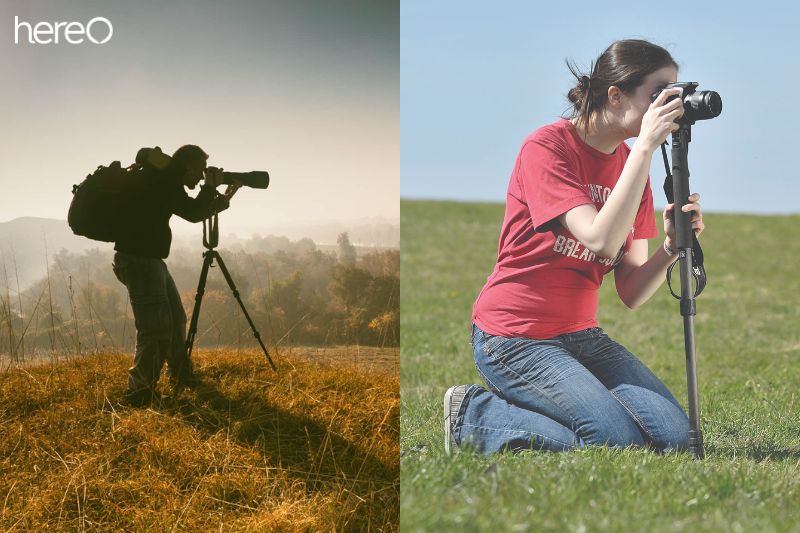
Pros and Cons of Monopods
Over a tripod, a monopod is always more compact and lightweight. According to my experience, people are more willing to use a photo accessory if it is lightweight.
When trekking or packing your camera equipment into a bag to go on vacation or your next photographic excursion, you’ll benefit from a monopod’s compact size and lightweight.
The second important advantage of a monopod is its compact size in a busy area. A monopod can be stretched down with just one leg, and its foot can be positioned in the space between your own two feet. In a crowded area, it doesn’t take up any more space than you already do.
A monopod’s drawback is that it provides less stability than a tripod. It supports the weight of the camera and raises it to a certain height above the ground, but you must always have (at least) one hand on the monopod, and even the steadiest hands cause the camera to move slightly from side to side.
A monopod offers significantly more stability than hand-holding but falls short of a tripod in this regard.
Pros and Cons of Tripods
Compared to a monopod, tripods offer you far greater stability. You can completely remove your hands from a tripod and your camera will have a safe and steady foundation as long as there isn’t a howling gale blowing.
You can use the far longer shutter speeds necessary for many kinds of long exposure photography because of its reliability.
The size and weight of a tripod are its main drawbacks. A monopod’s dimensions and weight are at least three times those of a tripod. Because a tripod must always have a tripod head as well as a center column, the difference is frequently much more than this.
Because of this, they are more difficult to pack for trips and take up more space when carried outside of your camera bag.
As a result of tripod legs creating trip risks that other people cannot see, many crowded areas and tourist destinations will post “No Tripods” signs. When you make the effort to carry a tripod about all day, just to discover that you can’t use it, these rules might be discouraging.
The cost of a tripod is its last drawback. A tripod will always be significantly more expensive when comparing monopods and tripods of equivalent grade. There is no avoiding this. They have more components and materials in them.
When Should You Use a Tripod vs Monopod?
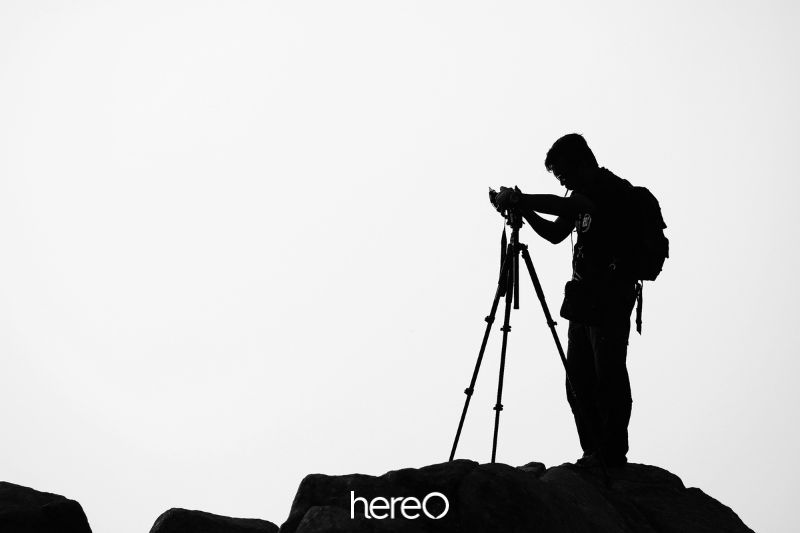
Landscape Photographers
In order to enhance your depth of field and capture fine details from the foreground to the background, landscape photography typically demands a small aperture. A tripod is also helpful from a compositional perspective for putting your camera low to the ground and keeping it steady in tight spaces.
When a camera is positioned lower, reflections in water are maximized, and the closer you set the camera, the more motion there is in moving water.
Long-Exposure Photography
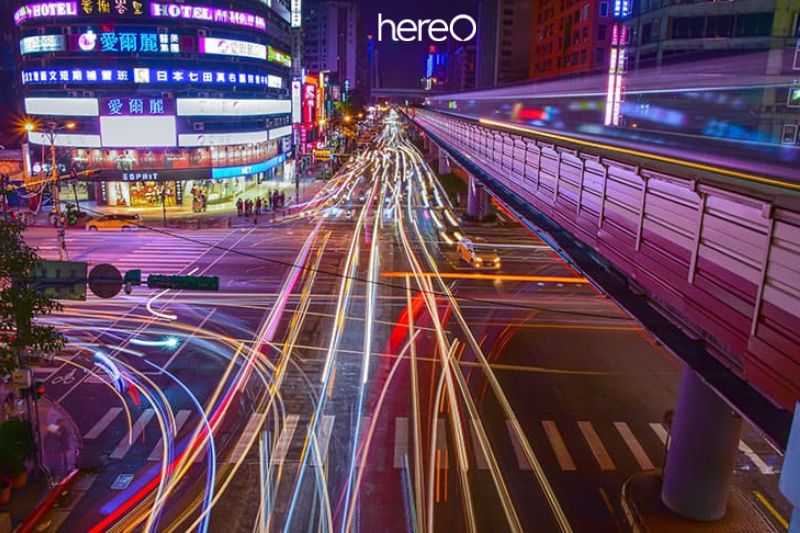
You would need to utilize a tripod in order to capture clear evening cityscape shots. The required exposure period is several seconds, and holding a monopod steadily for that long would be impossible.
Wildlife Photographers
The choice is not so easy for wildlife photographers. When you’re waiting, a tripod comes in handy. Perhaps you are hiding out near a local fox den, waiting for action. A tripod is ideal in these circumstances, especially when coupled with a gimbal head so that your telephoto lens is ready to use.
On the other hand, when you are continuously moving around and photographing wildlife, I frequently find a monopod to be helpful. When you find what you’re looking for after spending all day in the bush with your search animals, a monopod is significantly quicker to set up.
Sports Photographers
You must maintain constant poise and readiness in order to capture the action at its peak. You’re frequently shooting at longer focal lengths, which necessitates using large, heavy long lenses, and you’re frequently close to a crowd of people.
A monopod is ideal in these kinds of circumstances because it enables you to continuously monitor the action through the viewfinder while the event is happening and wait for the ideal moment.
Portrait Photographers
As long as the postures you are working through do not dramatically change your model’s eye height, it is rather common for photographers to use a tripod for studio photography.
By using a tripod, the photographer can get close to the camera without having to stand directly behind it, which can feel intimidating. Without that obstacle, the photographer can interact with less experienced subjects more effectively.
Macro Photography
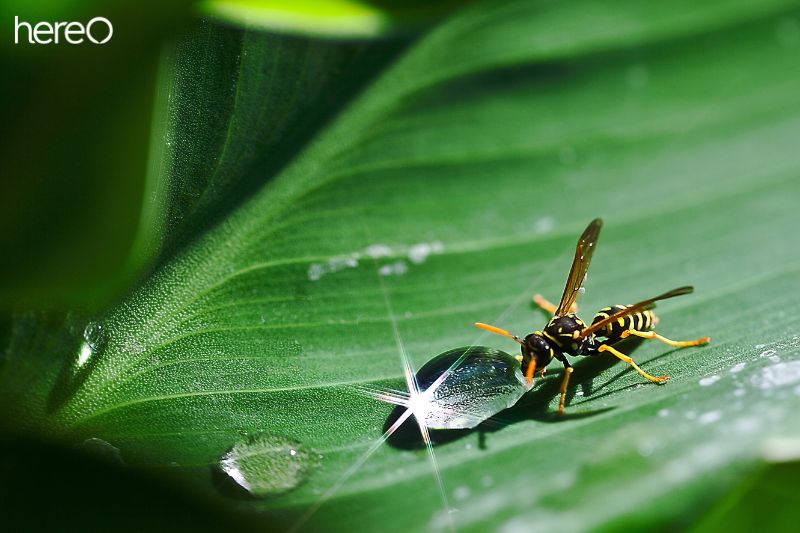
Due to the extreme magnifications utilized in macro photography, if you don’t apply any kind of stabilization, camera shake and soft photos are always a possibility. Let’s say your camera body or macro lens includes image stabilization.
If so, you can use a monopod to capture clear images of larger macro subjects like flowers, provided there is enough light to keep the shutter speed appropriate.
A tripod is necessary to ensure that your frames line up correctly when using focus stacking techniques to combine many photographs in Photoshop for a deeper depth of field.
Low Light Photography
All of these kinds of low-light photography require exposure times measured in seconds, sometimes minutes, or even hours, for optimal results. You will need a tripod if you want to capture any of these objects in their appropriate context.
By using a tripod, you can still take sharp, detailed pictures while controlling your ISO. The use of numerous image processing methods, such as start stacking for star-trail photographs and time-lapses of the night sky, is also made possible by a tripod.
Both of which necessitate keeping the camera still for very lengthy stretches of time.
Monopod vs Tripod: What Should You Buy?

The question can only be answered by you. You need to assess your shooting style before going out and getting one. Additionally, you need to consider the kind of photography you are performing.
Would you rather be mobile or stable? Or do you require a stable camera support at the cost of mobility?
You would be better off spending money on a reliable monopod if your line of business necessitates swift movements or relocations. Once you pair it with a ball head, you are ready to go.
On the other hand, a tripod is a great option if you like to take your time and photograph slowly. For those interested in photographing the outdoors or wildlife, this is the ideal option.
FAQs about Monopod vs Tripod
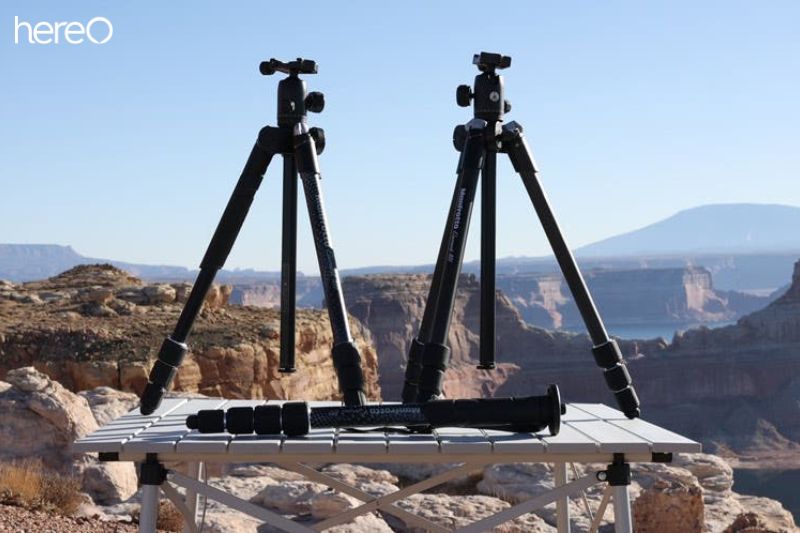
When would you use a monopod and not a tripod?
Using a tripod when there are a lot of people around is unkind, taking up space, and can even be against the law. Sometimes the only option is a monopod.
What is the monopod vs tripod for wildlife photography?
When photographing far-off subjects, wildlife photographers employ bulky, long lenses, and monopods weigh significantly less than tripods. When you’re traveling long distances over difficult terrain, a monopod is lighter to carry. When your target is moving quickly, a monopod is necessary.
Issues around wildlife photography and tripods and monopods A tripod is significantly preferable if you are photographing a stationary subject while using a very long lens.
What is the difference between a monopod and a tripod?
Both a tripod and a monopod are equipment made to hold a camera; the only difference between the two is in the legs. Three legs make up a tripod, hence the term “tripod.” A camera support called a monopod has only one leg, hence the name.
Can a tripod be used as a monopod?
A tripod could theoretically be used as a monopod by simply extending all three legs, without “spreading” them. But it’s more typical to purchase a tripod that can also function as a monopod.
Conclusion
If you’re a photographer, then you know that having a reliable camera support is crucial. But what’s the best option: a monopod or a tripod? Both have their own advantages and disadvantages, so it really depends on your needs. In any case, make sure to experiment with both to see which one works best for you.
HereOfamily thank you for reading this post about monopod vs tripod. We hope you find this helpful.
